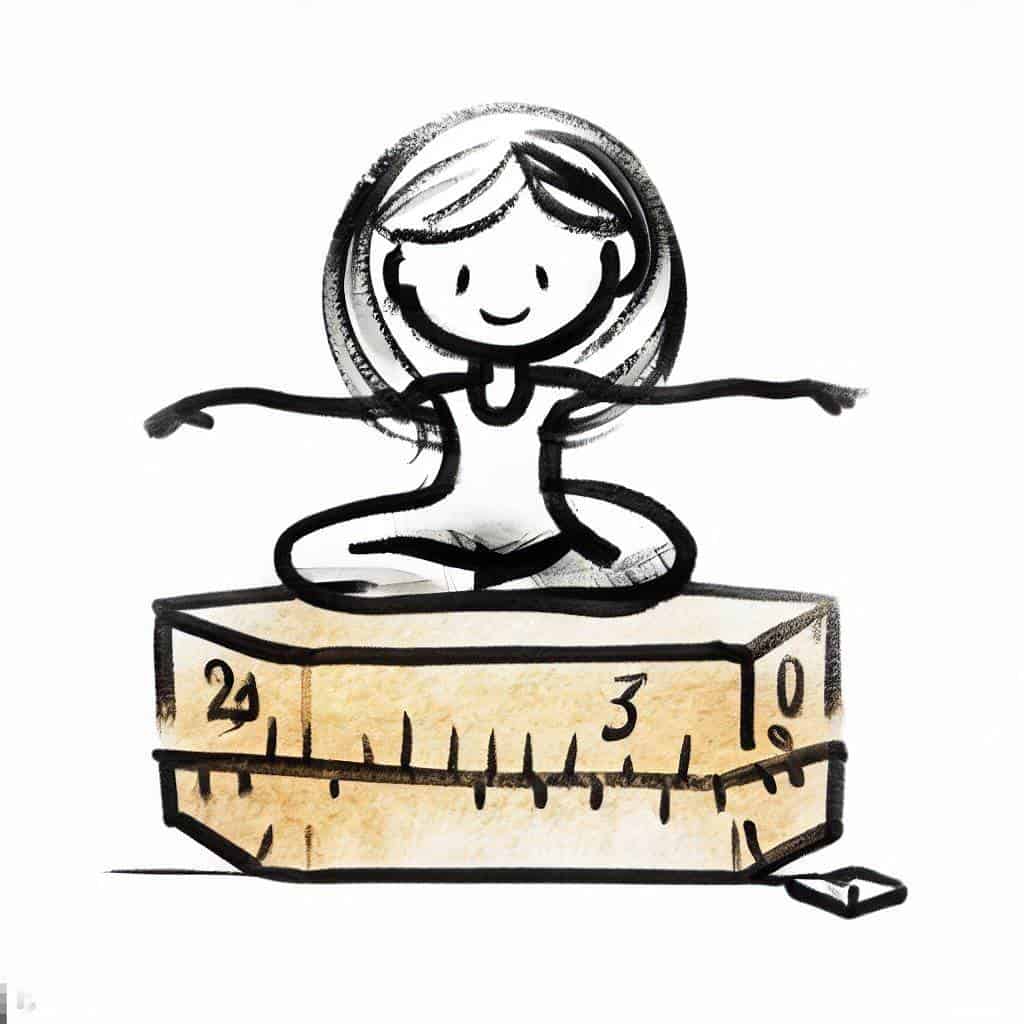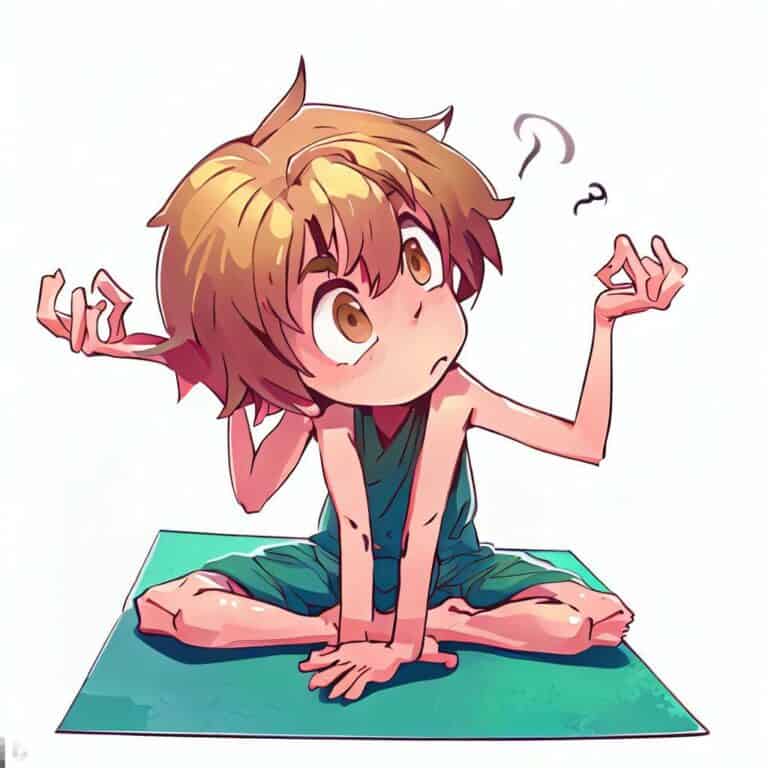Finding Your Perfect Fit: A Comprehensive Guide to Yoga Block Sizes

Introduction
Yoga blocks are a staple in any yoga practice and can offer countless benefits to practitioners of all levels. From providing support for difficult poses to increasing your range of motion, these handy pieces of equipment can help elevate your practice. However, with so many different types and sizes available, finding the right block for you can be overwhelming.
This article focuses on the choice of yoga block size. For those of you looking for the more comprehensive guide to choosing yoga blocks, I suggest this article Block by Block: A Comprehensive Guide to Choosing the Perfect Yoga Block.
- The article provides a comprehensive guide to choosing the right size of yoga block for your practice.
- It explains the importance of using yoga blocks in practice, including providing support, increasing range of motion, and preventing injuries.
- The article discusses different types of yoga block sizes, including standard, oversized, travel-sized, and specialty blocks, and offers tips on how to choose the right size based on individual needs and preferences.
The Importance of Using Yoga Blocks in Practice
If you’ve ever been to a yoga class before, chances are you’ve seen people using blocks. These simple props may not look like much, but they can make a world of difference in your practice.
For beginners or those with limited flexibility, blocks can provide support and stability in poses that would otherwise be too challenging. Even advanced yogis can benefit from incorporating blocks into their practice.
They allow you to deepen stretches or hold poses for longer periods of time without straining your muscles or compromising proper alignment. Plus, using blocks can help prevent injuries by taking pressure off of joints and keeping your body properly aligned.
Finding the Perfect Fit for Your Practice
Choosing the right yoga block size is crucial for getting the most out of your practice. While standard-sized 4x6x9 inch foam blocks may work for some people, others may need something larger or smaller depending on their individual needs.
In this article, we’ll explore different types and sizes of yoga blocks and how to choose the perfect fit based on your body type and level of experience. Whether you’re a seasoned yogi or new to the practice, we’ll help you find a block that will enhance your practice and take it to the next level.
Standard Yoga Block Sizes
Common sizes and their uses
One of the most commonly used yoga block sizes is 4x6x9 inches. This size is suitable for most practitioners and can be used in a variety of poses, such as supporting the hips in seated forward folds or propping up the hands in downward-facing dog. Another common size is 3x6x9 inches, which is slightly smaller than the standard block size but still versatile enough to support various poses.
These blocks are typically made out of foam or cork and offer a firm, stable surface for practitioners to rest their weight on during practice. The foam blocks are softer and more lightweight than cork blocks, while cork blocks are more durable and provide a firmer surface.
Determining if this size is right for you
Choosing the right block size depends on individual body type and level of experience. For beginners or those with tighter muscles, a larger block can offer more support while practicing certain poses.
Alternatively, those with more flexibility may opt for a smaller block to challenge themselves further. To determine if the standard 4x6x9 inch block size is right for you, it can be helpful to try out different sizes during your practice.
Pay attention to how your body feels with each size and consider factors such as comfort and stability when deciding which size to use. It’s also important to note that everyone’s body is different, so what works for one person may not work for another – experiment until you find what works best for you!
Oversized Yoga Blocks
Bigger is better? Maybe!While standard yoga blocks measure 4x6x9 inches, there are also larger sizes available. Oversized blocks can be a game-changer for some practitioners, offering increased support and stability in more challenging poses. These bigger blocks can be especially useful for individuals with injuries or limited mobility who need extra assistance in certain postures. One of the primary benefits of using an oversized block is the added height it provides. This additional height allows you to access more advanced postures that may have previously been out of reach. For example, using an oversized block can help you to fully extend your spine in seated forward folds or support your hips in pigeon pose. In addition, larger blocks can also provide greater stability and balance when practicing standing postures such as triangle pose or half moon pose.
Who Might Benefit From Using An Oversized Block?
While oversized blocks can benefit any practitioner looking for greater support and stability during their practice, they are particularly useful for those with injuries or limitations. If you have tight hips, hamstrings, or shoulders that prevent you from comfortably reaching the ground with a standard block, an oversized block may provide the extra height necessary to properly align your body in various postures.
Similarly, individuals with chronic pain or joint issues may find that an oversized block reduces discomfort and allows them to participate more fully in their practice. In addition to its physical benefits, practicing with an oversized block can also have psychological benefits.
The added support from a larger block can help build confidence and trust in your body’s ability to perform difficult poses safely and effectively. This confidence boost may lead practitioners to try new things on the mat that they might not otherwise attempt without this added assistance.
Travel-Sized Yoga Blocks
Traveling can be stressful, especially when you’re trying to maintain your yoga practice. Fortunately, there are travel-sized yoga blocks that make it easy to keep up with your routine while on the go. These lightweight and compact blocks are designed to fit easily into a suitcase or backpack, making them an excellent choice for yogis who travel frequently.
Explain why travel-sized blocks are useful
The primary benefit of using a travel-sized yoga block is convenience. When you’re traveling, it can be challenging to find the space and time for a full practice.
However, having a block with you means you can still do many of your favorite poses and sequences without compromising on quality or safety. Additionally, traveling can be hard on the body, so having a block can help support your joints and reduce the risk of injury.
Discuss different types of travel-sized blocks and their features
There are several different types of travel-sized yoga blocks available on the market today. Some popular options include foam blocks that compress easily, cork blocks that provide more stability and grip, and inflatable blocks that take up minimal space in your luggage.
Foam blocks tend to be the most common type because they’re lightweight yet durable enough for regular use. If you opt for an inflatable block, look for one that comes with a pump or is easy to inflate manually.
You’ll also want to consider the overall size and shape of the block – some inflatable models have curves or angles designed for specific poses or stretches. Cork blocks are another great option if you prioritize stability over portability.
They tend to be heavier than foam or inflatable options but offer better traction and support during challenging poses. No matter which type of block you choose, make sure it’s comfortable enough to use for extended periods.
Look for blocks with rounded edges or beveled edges to prevent discomfort or irritation in your hands and wrists. With the right travel-sized yoga block, you can stay connected to your practice no matter where you go.
Specialty Yoga Blocks
Introducing Unique Block Shapes and Sizes
When it comes to yoga blocks, there are more shapes and sizes than you might think. One type of specialty block is the half-moon block. This block has a curved side that can be used for deeper stretches or extra support during balancing poses.
It’s great for those who have a hard time placing their hand flat on a regular block or need a little extra support in certain poses. Another specialty block is the cork block.
Cork blocks are great because they are natural, sustainable, and offer a firmer surface than foam blocks. The firmness allows for more stability in your poses and can be helpful in advanced yoga practices.
How Specialty Blocks Can Enhance Your Practice
Specialty blocks can enhance your practice by providing additional support or challenging you to try new things. For example, half-moon blocks can assist with deeper stretches that might not be possible with regular blocks, while cork blocks encourage more stability during challenging postures.
Incorporating these unique shapes and sizes into your practice can also keep things interesting and prevent boredom from using the same old standard blocks every time. By experimenting with different types of blocks, you may discover new ways to approach poses that you had never considered before.
Overall, specialty yoga blocks offer many benefits beyond the standard 4x6x9 inch foam block. Whether you need extra support or want to challenge yourself further in your practice, there’s likely a specialty block out there that will enhance your experience on the mat.
Choosing the Right Size for You
Tips on How to Choose the Right Size Block
When it comes to yoga blocks, there is no one-size-fits-all solution. The right size block for you depends on your body type and level of experience.
If you are a beginner, it’s advisable to start with a standard-sized block (4x6x9 inches). This size is ideal for providing stability and support during basic poses such as downward dog and triangle pose.
However, if you have a larger build or prefer more support, an oversized block may be more suitable for your practice. On the other hand, if you have a smaller build or are looking to deepen your practice, then a travel-sized or specialty block might be what you need.
These blocks can provide greater flexibility and variation in your practice. It’s important to experiment with different sizes until you find the perfect fit for your body type and experience level.
Suggestions on Where to Purchase High-Quality Yoga Blocks
When purchasing yoga blocks, it’s essential to invest in high-quality ones that won’t crumble under pressure or wear down easily. A good place to start is by checking out well-known brands such as Manduka or Gaiam.
Online retailers like Amazon and YogaOutlet offer reliable options as well with extensive customer reviews that can help guide your choice based on personal user experiences with various types of products. If possible though, consider supporting small local businesses by sourcing from local shops as they would often have personalized recommendations based on their own experiences using different brands themselves!
Conclusion
After exploring the various sizes and shapes of yoga blocks, it’s clear that there really is a “perfect fit” for every practitioner. It’s important to remember that finding the right size block can make all the difference in your practice. Whether you’re a beginner or an experienced yogi, using blocks can help you achieve proper alignment, prevent injury, and deepen your stretches.
Remember that standard blocks (4x6x9 inches) are a good option for most people, but if you need more support, oversized blocks may be the way to go. And if you’re on-the-go or have limited storage space at home, travel-sized blocks are an excellent choice.
Don’t be afraid to try out specialty blocks like half-moon or cork as well – these unique shapes can provide specific benefits depending on your practice. Using yoga blocks is a fantastic way to take your practice to the next level.
Remember to choose a block that fits your body type and level of experience, and don’t hesitate to experiment until you find what works best for you. With the right block by your side, you’ll be able to unlock new depths in your poses and reach new heights in your practice – namaste!
More reading?
This article is part of a series of articles on the topic of choosing the perfect yoga block. Other articles in this series include:





